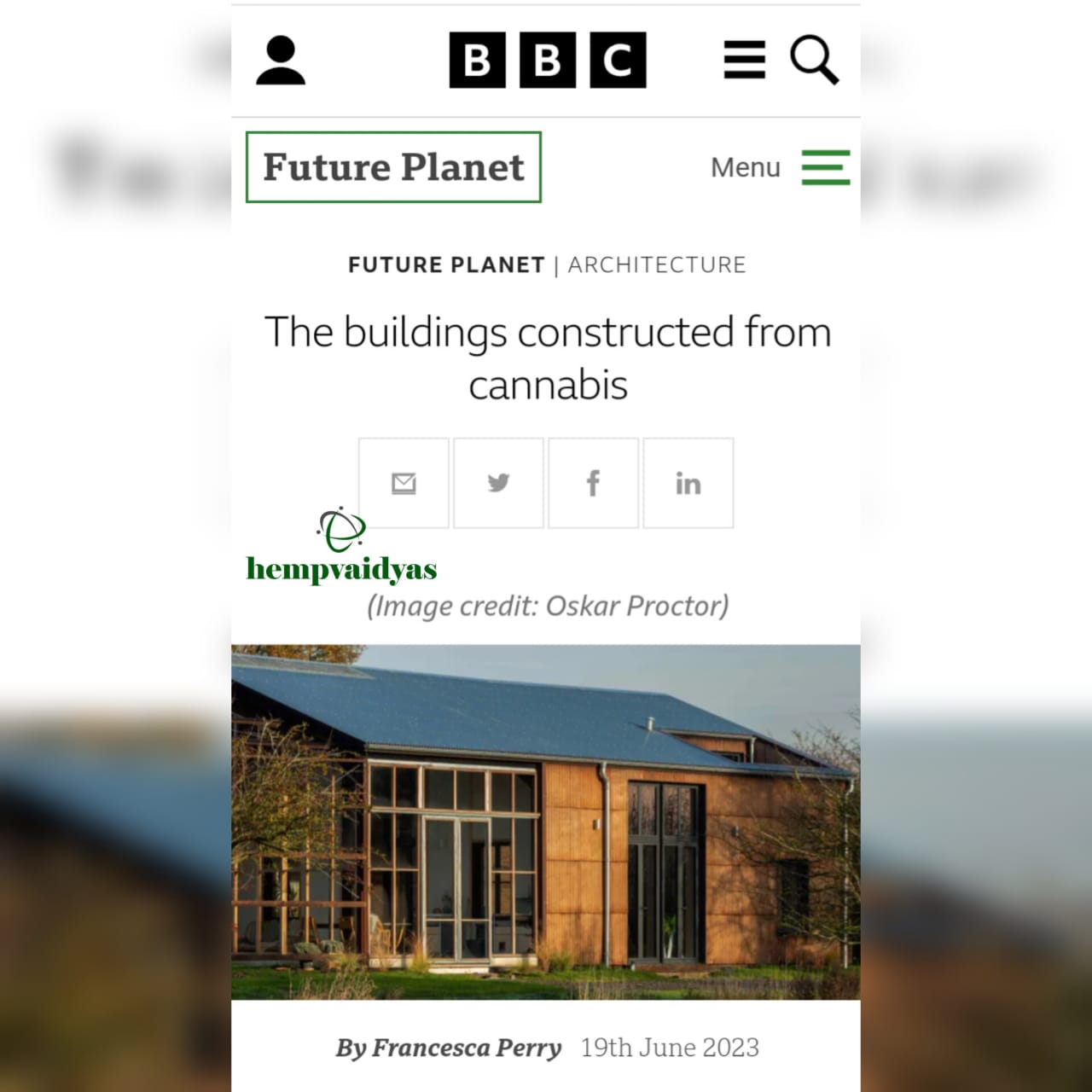The buildings constructed from cannabis
19-Jun-23 05:18:31

In search of sustainable materials, architects are turning to an unusual source: hemp.
Surrounded by verdant fields, Flat House, which sits on a farm in Cambridgeshire, the UK, looks like a typical barn conversion. But inside, the look and feel of the building immediately make you realise this is something quite different. "The walls remind me of hay bale dens we used to make as kids," says Flat House's owner Gemma Barron. "It has the most lovely acoustic quality. And last year we had the heating off for 24 hours in mid-winter and it stayed warm."
What makes this bright, airy and comfortable home unusual is the material used to build it: hemp. While we may be more familiar with the cannabis plant's association with the psychoactive substance cannabis, and its use in health supplements and textiles, hemp is rapidly becoming a sought-after sustainable construction material.
The fast-growing plant is a renewable resource, with carbon-capturing properties. When used in building, it typically takes the form of "hempcrete" (also known as lime hemp concrete), a sturdy material made by mixing hemp hurd – the woody core of the plant – with a binder made from water and lime. Hempcrete has a high thermal mass, making it an ideal insulation material which improves the energy efficiency of buildings and reduces greenhouse gas emissions over time. It also continues to absorb carbon over its lifespan.
Sustainable materials are in high demand as the construction industry seeks to decarbonise. Buildings and construction are responsible for approximately 37% of energy and process-related global carbon dioxide (CO2) emissions. This is due to the industry's heavy reliance on fossil fuels, including carbon-intensive materials such as concrete, steel and glass, as well as the greenhouse gases emitted in heating and cooling our buildings.
With its carbon capturing qualities, hemp could help countries reach their net zero goals by making construction more sustainable. "Optimising the way we design, construct, and renovate our buildings has a critical role to play in driving down emissions and enabling the UK to meet its climate targets," says Yetunde Abdul, head of climate action at the UK Green Building Council. "An important part of the solution involves exploring the use of natural, low-carbon alternatives to vital construction materials such as hempcrete or timber."
According to the European Commission, one hectare (2.5 acres) of hemp sequesters between nine and 15 tonnes of CO2, and only takes five months to grow – meaning it is better than typical commercial forestry at sequestering carbon. What's more, hemp production is reported to help regenerate soil and remove heavy metals from the ground.
But a whole host of challenges must be overcome before hemp can make its mark on the construction industry. These include changes to government regulation, technical certification, and the funding and infrastructure needed to scale up hemp's industrial production, streamline supply chains, and make it more affordable to use.
Today, in hempcrete form, the plant is used mostly by eco-minded architects with comfortable budgets in Europe and North America, mainly due to regulations controlling hemp production evolving in these regions. (It's worth pointing out that the industrial version of the plant does not contain the psychoactive agents of regular cannabis.)
Hempcrete does not work like concrete; it cannot be used structurally and so needs to be combined with load-bearing materials such as timber or stone. But as insulation, it offers a less carbon-intensive option than petrochemical-based materials such as fibreglass and foam board.
Hempcrete "does everything", says Summer Islam, co-founder of London-based Material Cultures, the research and design studio which built Flat House in 2020. "Its high thermal mass means it heats up and releases heat slowly, regulating interior temperature over the day." It's also hydroscopic, she adds, so it absorbs and releases moisture, making it good at regulating mould in buildings.
The hemp used for Flat House was grown on the surrounding land of Margent Farm. The project represents what Material Cultures calls "circular ecology", an approach to construction in which buildings emerge from, and can naturally reintegrate into, the landscape. Hempcrete has been used in pre-fabricated panel form to create the home's walls, fitted around a timber structure. Inside the house, the materials are left exposed, with the hay bale-like appearance of the hempcrete visible.
SOURCE & CREDIT: BBC